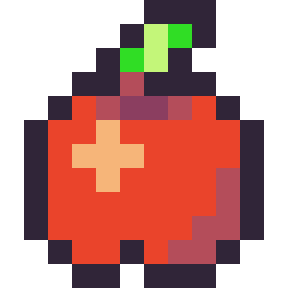 W
WThe demoscene is an international computer art subculture focused on producing demos: self-contained, sometimes extremely small, computer programs that produce audiovisual presentations. The purpose of a demo is to show off programming, visual art, and musical skills. Demos and other demoscene productions are shared at festivals known as demoparties, voted on by those who attend, and released online.
 W
WA 64K intro is a demo where the size of the executable file is limited to 64 kibibytes, or 65,536 bytes. At demo parties there is a category for this kind of demo, where the one that gives the best impression wins.
 W
WAmiga demos are demos created for the Commodore Amiga home computer.
 W
WChiptune, also known as chip music, is a style of synthesized electronic music made using the programmable sound generator (PSG) sound chips or synthesizers in vintage arcade machines, computers and video game consoles. The term is commonly used to refer to tracker format music which intentionally sounds similar to older PSG-created music, as well as music that combines PSG sounds with modern musical styles. It has been described as "an interpretation of many genres" since any existing song can be arranged in a chiptune style defined more by choice of instrument and timbre than specific style elements.
 W
WThe Commodore 64 (C64) demos are demonstrations of what can be done to push the limits of the Commodore 64 computer, made by programmers, musicians and artists.
 W
WThe demoscene is an international computer art subculture focused on producing demos: self-contained, sometimes extremely small, computer programs that produce audiovisual presentations. The purpose of a demo is to show off programming, visual art, and musical skills. Demos and other demoscene productions are shared at festivals known as demoparties, voted on by those who attend, and released online.
 W
WDemo effect is computer-based real-time visual effects found in demos created by the demoscene.
 W
WDemogroups are teams of demosceners, who make computer based audio-visual works of art known as demos. Demogroups form a subculture collectively known as the demoscene.
 W
WA disk magazine, colloquially known as a diskmag or diskzine, is a magazine that is distributed in electronic form to be read using computers. These had some popularity in the 1980s and 1990s as periodicals distributed on floppy disk, hence their name. The rise of the Internet in the late 1990s caused them to be superseded almost entirely by online publications, which are sometimes still called "diskmags" despite the lack of physical disks.
 W
WHugi is one of the longest lasting, frequently released demoscene and underground disk magazines (diskmag) for IBM-PC.
 W
WThe Mod Archive is a web site dedicated to the indexing and archival of playable music module files. It allows anyone to upload modules, and provides charts, reviews and ratings of music files based on a community effort.
 W
WModule file is a family of music file formats originating from the MOD file format on Amiga systems used in the late 1980s. Those who produce these files and listen to them form the worldwide MOD scene, a part of the demoscene subculture.
 W
WA music tracker is a type of music sequencer software for creating music. The music is represented as discrete musical notes positioned in several channels at discrete chronological positions on a vertical timeline. A music tracker's user interface is usually number based. Notes, parameter changes, effects and other commands are entered with the keyboard into a grid of fixed time slots as codes consisting of letters, numbers and hexadecimal digits. Separate patterns have independent timelines; a complete song consists of a master list of repeated patterns.
 W
WPixel art is a form of digital art, created through the use of software, where images are edited on the pixel level. The aesthetic for this kind of graphics comes from 8-bit and 16-bit computers and video game consoles, in addition to other limited systems such as graphing calculators. In most pixel art, the color palette used is extremely limited in size, with some pixel art using only two colors.
 W
WScene.org is a non-profit organization, providing the currently largest demoscene file repository. It was founded in 1996 by Jaakko "Mellow-D" Manninen, though originally it existed as ftp.fm.org, an FTP-server for releases from the group Five Musicians. In 1997, it re-opened as Scene.org. After the Hornet Archive closed on September 22, 1998, scene.org became the only prominent demoscene-FTP available and quickly became the host of many other releases as well.
 W
WStatic Line was an email-based ASCII Ezine that focused on the PC demoscene. It was a monthly publication with strong roots in the music aspect of the demoscene. It ran for 52 issues starting in July 1998 and finishing in March 2004.
 W
WTraxWeekly was one of the two main PC demoscene E-Zines of the 1990s, the other being DemoNews. It focused purely on the music scene and was for a time the central source of news on the Tracker technique and major releases in the music scene. It ran for 119 issues from March 12, 1995 to February 16, 1998, ending with a circulation of over eleven hundred subscribers. It established a strong format that included interviews, reviews, on-the-spot reports from major demo parties from all over the world. After closing it was largely replaced by Coplan/SceneSpot's Static Line E-Zine.
 W
WZX Spectrum demos are demos made for the ZX Spectrum and compatible computers. The demo scene on the Spectrum can probably be traced back to Castor Cracking Group, The Lords and a few other groups and individuals back in 1986. The ZX Spectrum demo scene was slow to start, but it started to rise in the late 1980s, most noticeably in Eastern Europe and southern Europe. Some demos were also released with magazines on cover tapes.